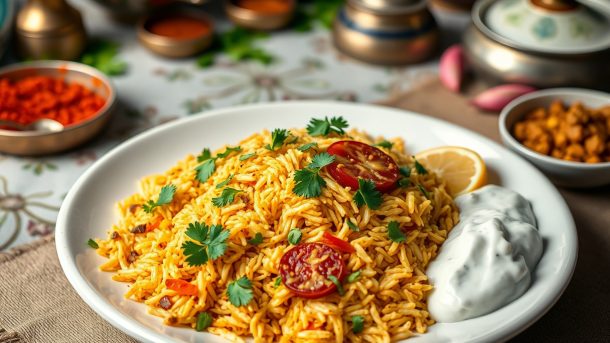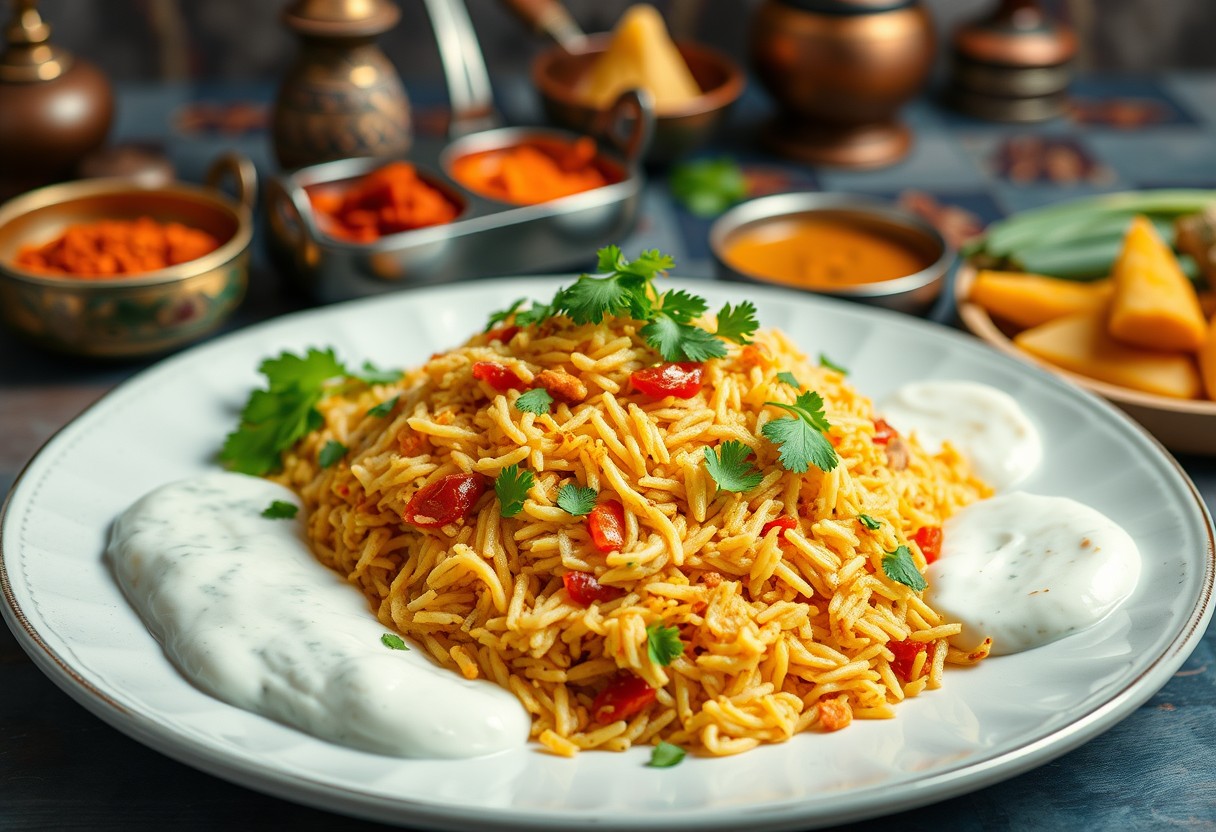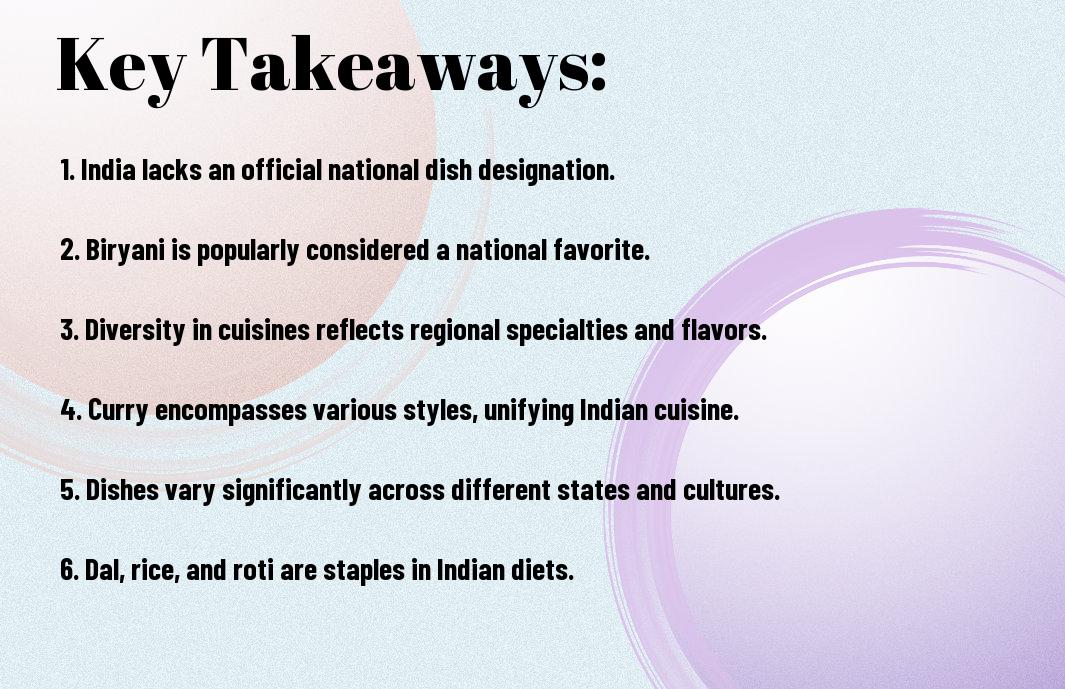Many people often wonder what India’s main dish is, as the country’s diverse cuisine encompasses a wide range of flavors and ingredients. To fully appreciate Indian food, you should explore its rich tapestry of spices, regional specialties, and traditional practices. One way to start your culinary journey is by checking out this insightful article on 49 Traditional Indian Foods to Taste in 2024. Understanding India’s staple dishes will not only enrich your palate but also deepen your appreciation for its vibrant culture.
Key Takeaways:
- Regional Diversity: India’s main dish varies significantly across different regions, with each state offering its unique culinary specialties.
- Staple Ingredients: Common staple ingredients such as rice, wheat, and lentils play a fundamental role in the main dishes, complemented by various spices and herbs.
- Cultural Influences: Historical and cultural influences, including religious practices and trade, have shaped the variety of main dishes found throughout India.
Overview of Indian Cuisine
While exploring the rich landscape of Indian cuisine, you will discover a tapestry woven from diverse regional ingredients, varying cooking techniques, and unique flavors. The culinary traditions reflect India’s cultural heritage and historical influences, making each dish an extraordinary representation of the land it comes from. It is necessary to appreciate the complexity and variety that define the meals enjoyed across the nation.
Diversity in Regional Flavors
For you, the diversity in regional flavors is perhaps one of the most exciting aspects of Indian cuisine. From the fiery curries of the south to the tangy street food of the west and the aromatic biryanis of the north, each region boasts its own distinct palette. This variety not only enhances your culinary experience but also invites you to explore the traditions and ingredients unique to each locale.
Influence of Culture and Traditions
One of the key aspects of Indian cuisine is the profound influence of culture and traditions on the food you enjoy. These elements shape how meals are prepared, shared, and consumed, elevating food from mere sustenance to a significant cultural experience.
Influence of various festivals, rituals, and community gatherings often dictate the ingredients and preparation methods used in Indian cooking. For instance, during Diwali, you might encounter sweets like ladoos and barfis, which carry deep symbolism and tradition. Additionally, regional festivals often highlight specific dishes, showcasing the harmony between culinary practices and social customs. Understanding these influences allows you to appreciate the stories behind the dishes, making every bite a journey through India’s rich cultural tapestry.
Staples of Indian Diet
If you are exploring the rich culinary landscape of India, you’ll quickly discover that the diet is anchored by a few staple foods that vary regionally. Two of the most significant staples are rice and wheat, each serving as a foundation for meals in different parts of the country.
Rice: The Southern Cornerstone
To many in southern India, rice is not just a staple; it’s the essence of everyday life. It forms the base for a multitude of dishes, from simple steamed rice to elaborate biryanis, showcasing the diversity of regional flavors. Whether served with a spicy curry or a fresh chutney, rice is quintimperative in southern Indian cuisine.
Wheat: The Northern Staple
Diet in northern India revolves around wheat, which is used to prepare a variety of unleavened breads like roti and paratha. These breads often accompany delicious gravies and lentil dishes, making them a vital part of your daily meals.
Indian wheat flour is known for its versatility. Apart from being used in breads, you can also find it in sweets like halwa and various snacks. Rich in carbohydrates and nutrients, wheat provides energy and sustenance, allowing you to experience the warmth and flavors of northern Indian hospitality with every meal.

Signature Dishes
All of India’s diverse regions boast signature dishes that showcase the country’s rich culinary heritage. If you’re curious about Indian main dish recipes, you can explore various options on Indian Main Dish Recipes to experience these flavors in your kitchen.
Biryani: A Regal Rice Dish
Dishes like Biryani represent a fine blend of saffron-infused rice layered with marinated meat or vegetables. It’s often cooked over a gentle heat, allowing the flavors to meld beautifully. Originating from royal kitchens, this dish holds a special place in Indian cuisine and is a must-try for anyone looking to indulge in the grandeur of Indian food.
Curry Varieties: Spices and Ingredients
Any meal in India isn’t complete without an array of curries, each varying in spices, ingredients, and preparation techniques. From creamy tomato-based gravies to tangy coconut-infused sauces, the diversity of curry reflects the country’s culinary landscape. Various regions have their unique twists, ensuring that every bite offers a different experience.
Dish options abound, but the common thread among all curries is the meticulous use of spices like cumin, coriander, turmeric, and garam masala. These ingredients not only bring depth of flavor but also enhance the health benefits of the dishes. Don’t hesitate to mix and match spices according to your palate, as the creativity in curry making is truly limitless!
Dosa: A Popular South Indian Delicacy
Delicacy like Dosa is a thin, crispy crepe made from fermented rice and lentil batter. Typically enjoyed with a side of chutney and sambar, it’s a favorite breakfast item across the southern states of India. The versatility of dosa allows for numerous fillings, from spiced potatoes to paneer, making it a delightful option for any meal of the day.
It’s worth noting that dosas can be enjoyed plain or stuffed, and they can easily be modified to suit your dietary preferences. Whether you prefer a classic plain dosa or one filled with richly spiced potatoes, this dish is sure to provide a satisfying and fulfilling meal option. Plus, making dosa can be a fun experience, especially when you explore different variations!
Paneer Tikka: A Vegetarian Favorite
Spices come alive in Paneer Tikka, a vibrant dish made from marinated cubes of paneer grilled to perfection. The marinade typically includes yogurt, bold spices, and sometimes even a hint of lemon juice, which imparts a delicious tang. Served with green chutney, this dish makes for an exquisite starter or a side on your meal plate.
Favorite among vegetarians, Paneer Tikka not only satisfies the palate but also provides a protein-rich option. You can experiment with your seasoning and even swap out paneer for tofu for a vegan alternative. No matter how you make it, this dish is bound to impress with its smoky flavors and stunning presentation!

Summing up
Upon reflecting on India’s main dish, you will find that it is not confined to a single item, as India’s culinary diversity offers a variety of staple foods that vary by region. However, rice and lentils, often served as dal and accompanied by an array of spices and vegetables, represent the essence of Indian cuisine. These offerings not only nourish the body but also embody centuries of tradition and cultural significance, allowing you to explore the rich tapestry of flavors that India has to offer. Enjoying these dishes connects you to the heart of Indian culture.
FAQ
Q: What is India’s main dish?
A: India’s main dish varies significantly by region and culture, but some of the most popular contenders include rice, roti (flatbread), and various curries. Each Indian state has its own traditional staple dish – for example, biryani in Hyderabad, dosa in South India, and paneer dishes in the North. Thus, there isn’t a single ‘main dish’ for India.
Q: Is curry considered the main dish of India?
A: While curry is a fundamental component of many Indian meals and often accompanies rice or bread, it is not considered a standalone main dish. Instead, it is typically served as part of a balanced meal with other elements, such as lentils, vegetables, and rice or roti, depending on the region.
Q: What are some typical ingredients in Indian main dishes?
A: Indian main dishes commonly include a variety of ingredients such as rice, lentils, vegetables, meats (like chicken, lamb, and fish), and a range of aromatic spices such as cumin, coriander, turmeric, and garam masala. These ingredients contribute to the rich flavors and diverse textures found in Indian cuisine.
Q: How do regional cuisines influence India’s main dishes?
A: India’s vast geography and cultural diversity significantly influence its main dishes. For instance, coastal regions often emphasize seafood and rice, while northern states may favor wheat-based dishes like naan and roti. Likewise, vegetarianism is prevalent in many parts of India, leading to a variety of lentil and vegetable dishes that serve as staples.
Q: Can Indian main dishes be enjoyed by vegetarians?
A: Absolutely! India is known for its extensive vegetarian cuisine, with many regions offering a variety of delicious vegetarian main dishes. Options include paneer dishes, various vegetable curries, biryanis, and lentil-based dishes like dal. Many Indian restaurants also provide a range of vegetarian choices to cater to all dietary preferences.









